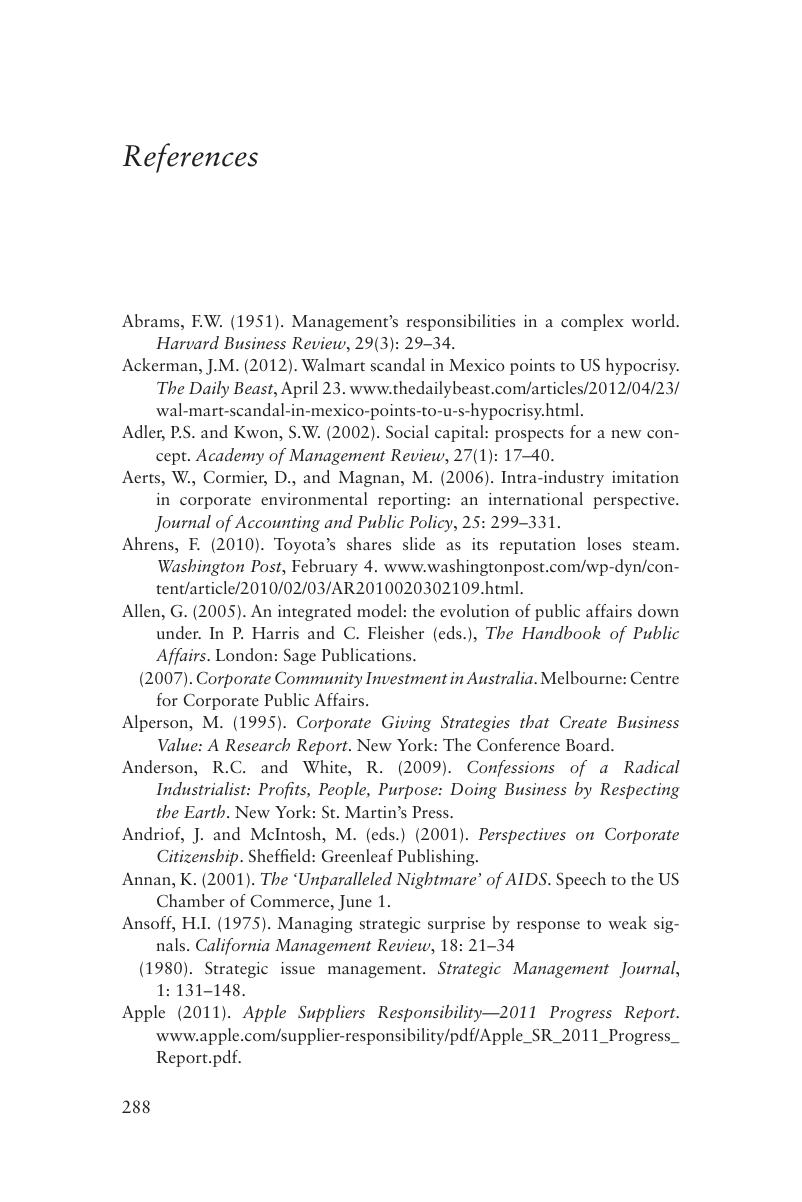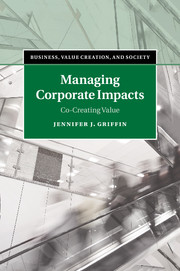Book contents
- Managing Corporate Impacts
- Business, Value Creation, and Society
- Managing Corporate Impacts
- Copyright page
- Contents
- Figures
- Tables
- Foreword
- Book part
- 1 Corporate impacts: focusing on relationships and outcomes
- 2 Four mindsets on financial impacts
- 3 Employee and product impacts
- 4 Information-sharing impacts: redefining ‘community’
- 5 Combining impacts, net impacts, and spillover effects
- 6 Multiplier effects
- 7 Debunking persistent myths about co-creating value
- 8 Anticipating changes in expectations
- 9 Convergence: combining issues and interests to co-create value
- 10 Aligning initiatives and mechanisms for impact
- 11 Integrating global and local impacts in a global economy
- 12 The art and science of managing impacts
- References
- Examples of web-based resources
- Index
- References
References
Published online by Cambridge University Press: 05 January 2016
- Managing Corporate Impacts
- Business, Value Creation, and Society
- Managing Corporate Impacts
- Copyright page
- Contents
- Figures
- Tables
- Foreword
- Book part
- 1 Corporate impacts: focusing on relationships and outcomes
- 2 Four mindsets on financial impacts
- 3 Employee and product impacts
- 4 Information-sharing impacts: redefining ‘community’
- 5 Combining impacts, net impacts, and spillover effects
- 6 Multiplier effects
- 7 Debunking persistent myths about co-creating value
- 8 Anticipating changes in expectations
- 9 Convergence: combining issues and interests to co-create value
- 10 Aligning initiatives and mechanisms for impact
- 11 Integrating global and local impacts in a global economy
- 12 The art and science of managing impacts
- References
- Examples of web-based resources
- Index
- References
Summary

- Type
- Chapter
- Information
- Managing Corporate ImpactsCo-Creating Value, pp. 288 - 312Publisher: Cambridge University PressPrint publication year: 2016



